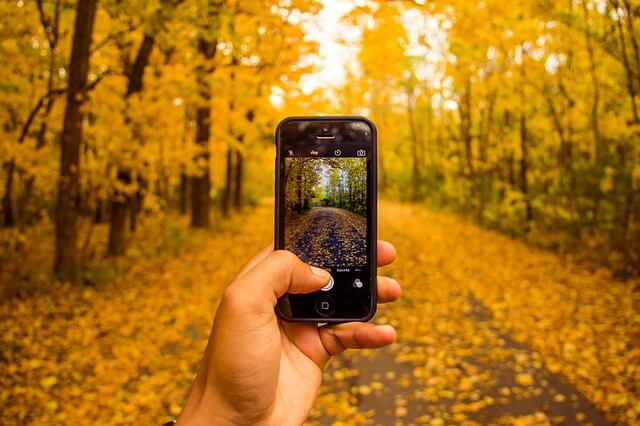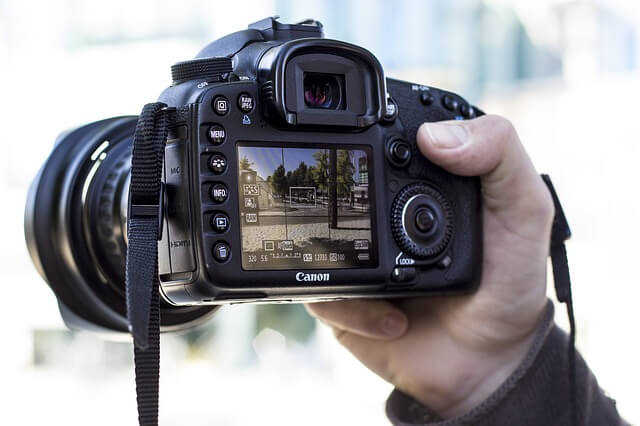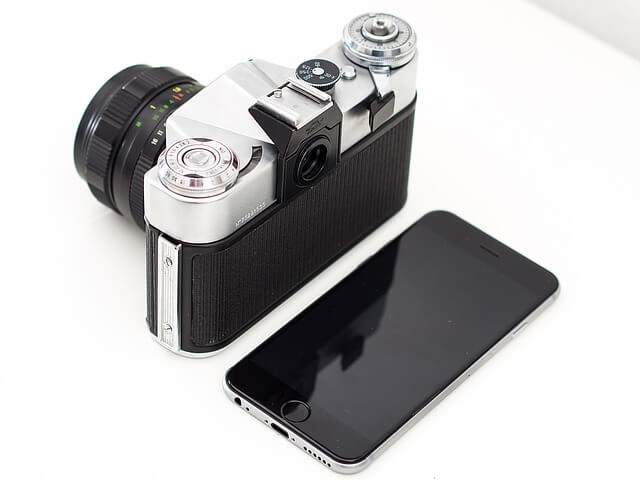Smartphone camera technology has made wonderful advances in recent years and became a tough competitor to digital cameras, especially compact cameras. Smartphones have, to all intents and purposes, killed off the standard compact camera market. If developments continue on their current trend, then in, say, a few years’ phone cameras should indeed be capable of producing images comparable to those from today’s high-end cameras. On the other hand, camera sensor technology will also improve massively. Also, big improvements are expected in the areas of ISO and noise control, dynamic range, and resolution. Cameras will no doubt be able to capture a much wider dynamic range. And high-ISO noise control could be so effective that high ISO settings are able to deliver cleaner images than low settings can today.
So even if smartphones become capable of the image quality a full-frame DSLR can deliver today, just imagine how much better the equivalent camera would be.
When it comes to DSLRs and mirrorless, these two types of cameras produce significantly better image quality than even the best smartphones, as well as offering high-quality interchangeable lenses that make it possible to shoot a wide range of subjects – fast primes for a shallow depth of field in portraits and still life, ultra-wide-angle for landscapes, telephoto for sports, macro for extreme close-up photography, perspective control for architecture.
In this post, I’ll go through the Pros of both the smartphone camera and the digital camera to help you decide when to use and why. In the end, the choice comes down to three main things:
- Your expectations of image quality.
- How much control do you have over your camera parameters and the choices among the different types of lenses you need?
- What you’ll be doing with your images once you’ve taken them, are you going to only share them or you are planning to print them?

Pros of Smartphone Camera
Convenience
You cannot beat the convenience of the mobile phone, it is always with you. Unless you are a professional photographer, it’s highly unlikely you’ll be leaving the house armed with a camera every day, whereas your smartphone is with you all the time, making it very easy just to whip it out and take a picture.
Easy to use
The camera on phones is mostly, if not completely, automated. Thus, if you are not a trained photographer using a camera phone is a great choice because it doesn’t require any special training. Once you learn the easy editing tools on your phone and on Instagram you’re all set.
Inexpensive
You already own a phone because the camera came with it. Therefore, you aren’t buying expensive equipment.
Easy Photo Editing
There are many apps dedicated to photo editing, they let you do the basic editing functions such as tweak exposure and add frames, add filters, and adjust color. The good news is that many of them are free. This makes it easier than ever to experiment with your photographs and get your creative photos on your phone.
Fast Photo Playback
The trend of the smartphone display has been for bigger display screens (five- and six-inch). It is sometimes double the size of screens found on a compact camera. This makes it easier to compose pictures and see fine detail and ensures a fast and clear playback experience.
Photos Sharing
The majority of modern smartphones can easily connect to the internet, once connected you can share photographs from your phone within seconds. Sharing features offered by most smartphones can include WhatsApp, multiple email accounts, Instagram, SMS, Facebook/Messenger, Skype, and cloud storage solutions.
Sharing from a digital camera is slightly different, as you need a cable or card reader around with you and have access to a computer. Some manufacturers provide their digital cameras with a Wi-Fi feature that enables you to upload photos to photo-storing websites or social media
The convenience of camera phones also makes it easier to edit and share photographs on the go, instead of waiting until you get home.

Pros of Digital Camera
Image Quality
The digital camera is capable of producing much better image quality than the smartphone camera. This is due to the following features:
They have a larger sensor size
One of the benefits of using a camera with a large sensor is the ability to create a shallow depth of field (the part of the image behind the main subject). When shooting a portrait photograph, you can easily get the background of your image beautifully blurred, meaning the subject ‘pops out’ of the image. If you use a smartphone camera, the image will look flatter and darker in the shadow area, as the smartphone cannot handle the contrast in light. The smartphone cameras focus on the whole image so the background is as much a part of the shot as the person is.
Lens versatility
The majority of camera phones have fixed-focus lenses. To get close to the action, you have physically to move; crop the picture or zoom digitally which simply enlarges the pixels so they can look blurred. Some recent high-end smartphones now include optical zooms.
Digital Camera HQ explains that digital cameras are also better at shooting close-ups, many have Macro modes that can shoot from 1cm away, and a smartphone with a decent camera can focus from 10cm.
Many digital cameras offer an optical or sensor stabilizer that reduces the effect of camera shakes in low light, when using a long lens, or when shooting fast-moving action. Because of the cost of these stabilizers and the fact they can increase the depth of the device, phone manufacturers tend to include digital stabilizers which reduce the quality of the pictures.
They have optical zoom.
Almost all digital cameras have a minimum of 3x optical zoom, but so-called ‘travel compacts or superzooms’ can go as high as 30x, offering the photographer a huge amount of creative control. On the contrary, when you zoom in using a camera with a digital zoom (smartphone camera), you are simply cropping what’s in front of you. This can result in a lack of detail or blurriness. You may not be able to see your subject clearly and the photo may not capture a scene as you want to remember it.
They can cope with a low-light situation
Most smartphone cameras struggled to produce pleasing results in low-light conditions. That’s because their image sensors (the part that responds to light to create an image) are less proficient at coping with low light situations than the sensor you’ll find in compact cameras, mirrorless cameras, and DSLRs. Also, many smartphone cameras offer no control over ISO settings (the level of sensitivity of your camera to available light) meaning images look dark.
In low light conditions, digital cameras adjust shutter speed, ISO, and other settings to ensure crisp, detailed images you’ll want to print and share. Smartphone cameras can’t achieve a fast enough shutter speed or respond to the available light to produce a satisfyingly sharp image.
They have a bigger Storage space
The smartphone’s storage is used to store your apps, podcasts, music, and so on. Unless you using a high-capacity model, you’re going to run out of space quickly if you try using it as your primary camera, too. On the other hand, your DSLR is going to specialize in photo and video alone. What’s more, most use SD cards, and they’re cheap and readily available. Shooting at high resolution, especially when it comes to video, takes up a fair amount of space. That said, it’s easy to equip yourself with enough SD cards to cater to your needs.
They have a longer battery life
Digital cameras can typically take between 300 and 500 photographs per charge. On the other hand, smartphones tend to run out of power very fast, particularly if you’re browsing the web or using Flash.
Read also: Why You Can’t Always Rely On A Smartphone For Professional Photography.
Thanks for reading, I hope you enjoyed the article if you have any questions just post them below & I will be happy to answer you.
If you enjoy the site, don’t forget to subscribe, we will only inform you when a new article is posted.










What sort of money would you have to spend on a digital camera to get significant improvements over a phone camera? Would a £75 Kodak PixPro be worth it? Thank you
It depends actually on what you want to photograph & your preferred photography type. If you just need a camera for everyday fast shots with normal quality the smartphone cameras will do the job but if you want to capture the moon or far subjects for example then the Kodak might be a good option, however, the quality will not be that great too. Remember, you always get what you pay for. When I started to enhance my photography skills I looked for the entry-level DSLRs to start with like Canon T6. so if you are serious about photography and want a good start I recommend an entry-level DSLR/Mirrorless camera from well-known brands. The Sony A6000 is a highly recommended camera that you will not regret having one unless you just need a camera for everyday photography with some advantages over smartphones & you have very low budget then the Kodak might fit your needs.
The obvious winner here is the digital camera and that is very obvious because it has most of the features of the camera phones and even more which makes it a top choice. I like the fact that you have some nice information about them both. I know a couple of people who use the phone cameras to take very good pictures though and they are always impressive. I know sometime, the picture quality will meet up massively with the digital cameras too.
Thanks for your feedback, my opinion is that the actual winner of this debate is the photography itself. They all are working towards producing amazing photos.
Well, , I think that in this world, there are some phones that are trying so hard to meet up with some of the best digital cameras out there. The iPhone camera for example is very top notch. Samsung cameras too are very good but the truth is, I feel they somewhat take the beauty for photographers. In a wedding for example where a photographer is hired, everyone would stand up to take pictures and they seem to drag angles with the photographer. It’s really sad. Nice one to differentiate them.
Thanks